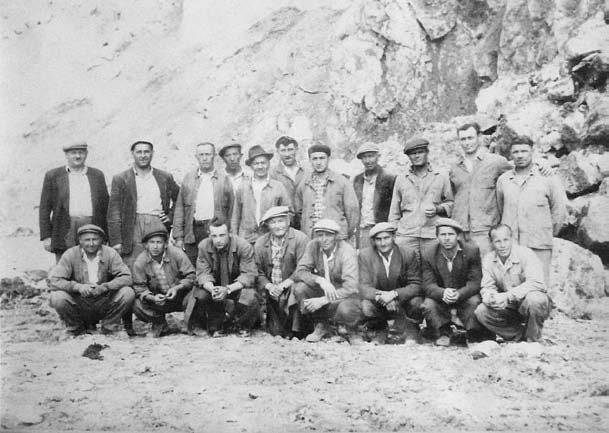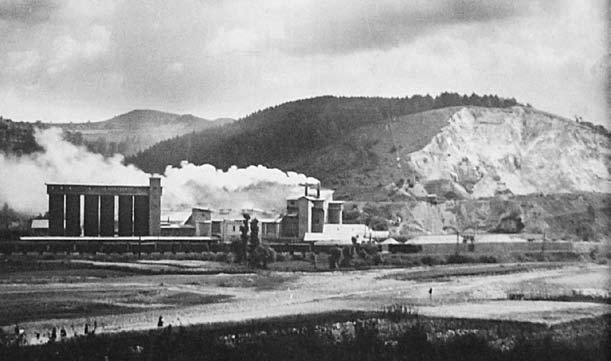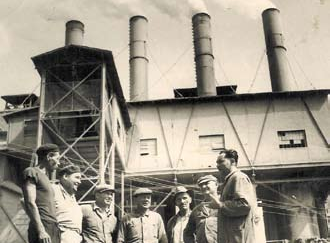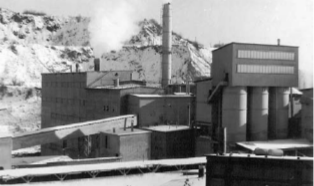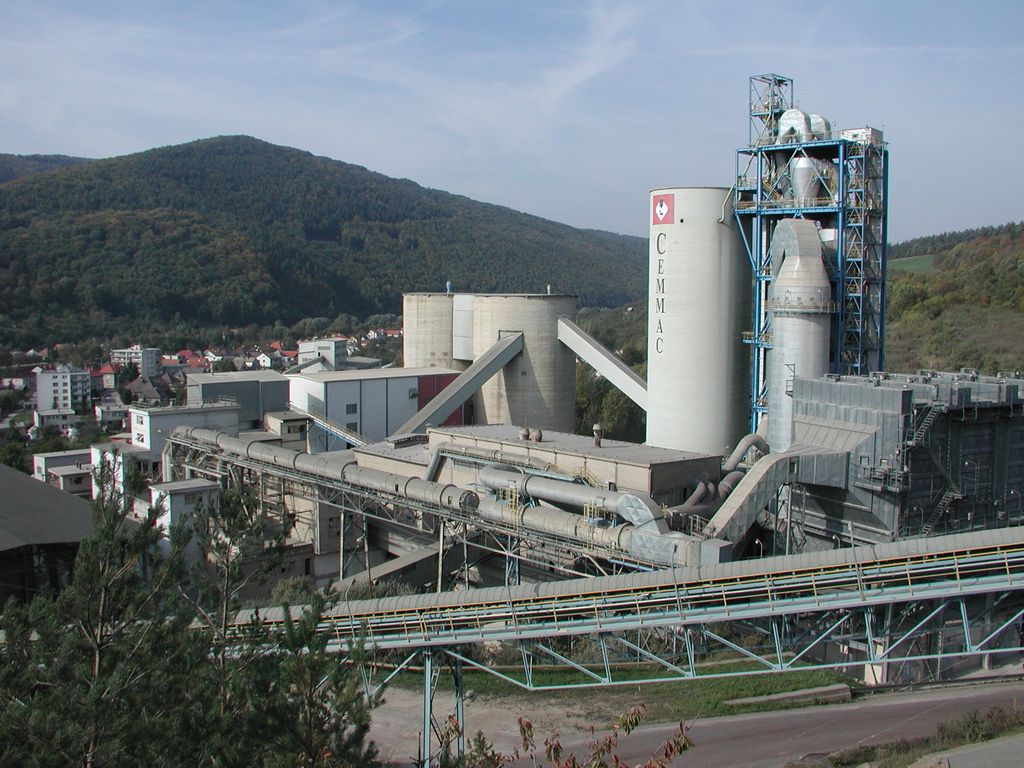History
| 1883 | The Italian entrepreneur Giovanni Batista Pisetta founded a limestone quarry in the location of the current cement plant; he was supplying limestone blocks for the construction of railways from the quarry. |
| 1891 | Tests confirmed the suitability of the raw material for the production of Roman cement. |
| 1895 až 1914 | Pisetta had two brick kilns built for clinker burning with a capacity of 70q per kiln. Later on, three more lime burning kilns were added, each with a capacity of about 140q. |
| 1922 | Tests performed at a research institute in Brno and Berlin confirmed the superior quality of limestones and marls, and exceptional chemical and physical properties for the production of Portland cements. |
| 1926 | The Spišek family bought the local quarries from Pisetta, created the public limited company Moravsko-slovenské cementárne [Moravian – Slovak cement plants] and had a cement plant built by the firm Curt von Gruber from Berlin. |
| 1929 | The first cement plant was built, with one kiln with a capacity of 100 tonnes of clinker per day. At that time, the cement plant had a hammer crusher, a tank dryer, a raw mill, a cement mill, two cement silos and a manual packing area. |
| 1943 | Two shaft kilns, four cement silos, a clinker hall, a raw mill and a second cement mill were added. |
| 1945 | After the end of WWII, the cement plant in Horné Srnie, as the first cement plant in Slovakia, started to produce cement. |
| 1947 | The cement plant became part of Slovenské cementárne a vápenky [Slovak cement plants and lime plants] with corporate headquarters located in Trenčín. |
| 1948 | The fourth shaft kiln was built, mining in the quarry was mechanized by the use of excavators. |
| 1950 | A separate organizational unit, the Hornosrnianska cementáreň, štátny podnik [Horné Srnie cement plant, state-owned enterprise] was created; it had an associated lime plant in Nové Mesto nad Váhom. |
| 1959 | Major modernization of the plant. Four shaft kilns, a crushing plant, six raw material containers, a raw mill, three reinforced-concrete homogenization silos, a second mill, two wind screens and a complete slag drying station were built. |
| 1968 | The 5th shaft kiln was put into operation. |
| 1970 | Construction of an electrofilter for dust elimination from kilns. |
| 1988 | Two concrete clinker silos with a capacity of 15 000 tonnes of clinker were built. |
| 1994 | An electrofilter was put into operation, thanks to which today the plant emits less carbon than Western European cement plants. |
| 1998 | Start of the construction of a new rotary kiln line. The conversion included the construction of a rotary kiln with a LUCE five-stage cyclone heat exchanger and with a calcining channel, as well as a clinker cooler, a raw material crushing plant, a pre-blending store, a homogenization silo, and a coal mill. |
| 2000 | Start of the feeding of raw material into the kiln line and launch of the construction of a slag drying plant. |
| 2001 | Commissioning of the slag drying plant. |
| 2003 | Anew cement mill was commissioned |
| 2004 | Use of TAP in the clinker burning process, reduction of the quantity of Cr6+ in cement. |
| 2005 | Exhaust of kiln gases, by-pass disposal of chlorine in the system |
| 2006 | Modernization of the bulk cement dispatch to road tank cars |
| 2007 | Transport and feeding of additives into cement mills. |
| 2008 | Start of the construction of fly ash silos and an oil storage, preparation of the construction of a cement silo |
| 2009 | New cement silo + dispatch, fly ash silos – commissioning |
| 2010 | Addition of storage tanks and dispensing weights on the raw mills. |
| 2011 | Feeding of a grinding intensifier into cement mills, start of a conversion of the clinker cooler. |
Copyright 2017 - 2018 CEMMAC a.s.

